Submitted by WA Contents
Erre Q Erre built stone-clad pavilion as "containment, rest and contemplation" in Mexican landscape
Mexico Architecture News - Mar 21, 2023 - 13:01 3176 views
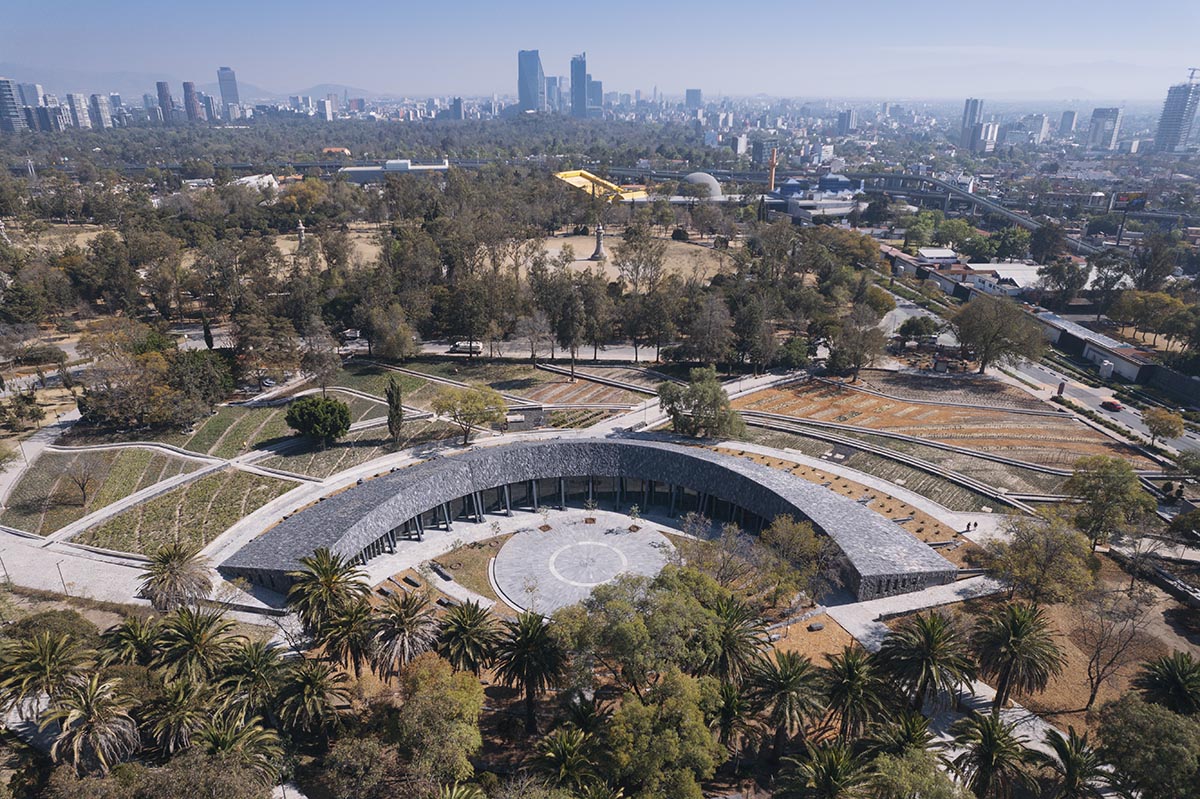
Mexican architecture practice Erre Q Erre has built a stone-clad pavilion as a "containment, rest and contemplation" in Mexican landscape in Bosque de Chapultepec, Mexico.
Named Chapultepec Environmental Culture Center, the 90,000-square-metre pavilion was replaced from a former vehicular parking lot into a pavilion where visitors are surrounded by a set of gardens with a naturalistic design and an ethnobotanical look.
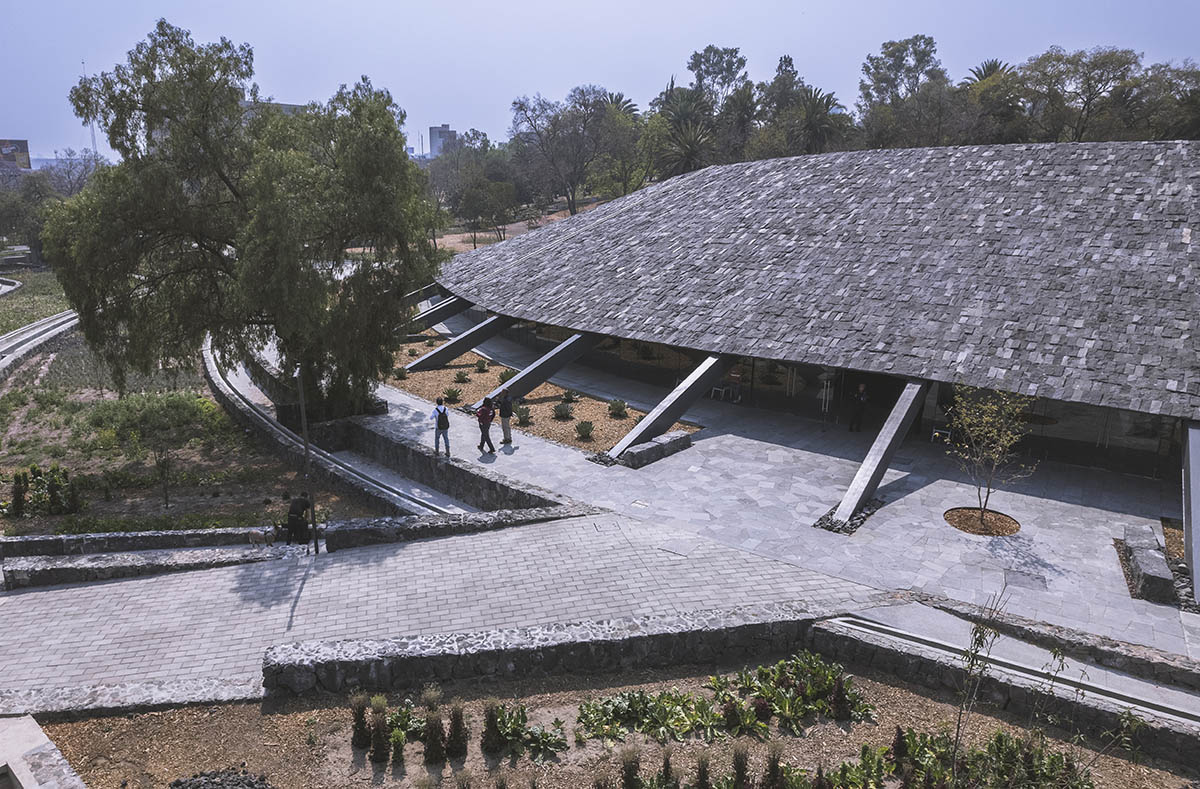
Erre Q Erre has completed the project as a result of a public and open competition, called by the Government of Mexico City in coordination with the Federal Government.
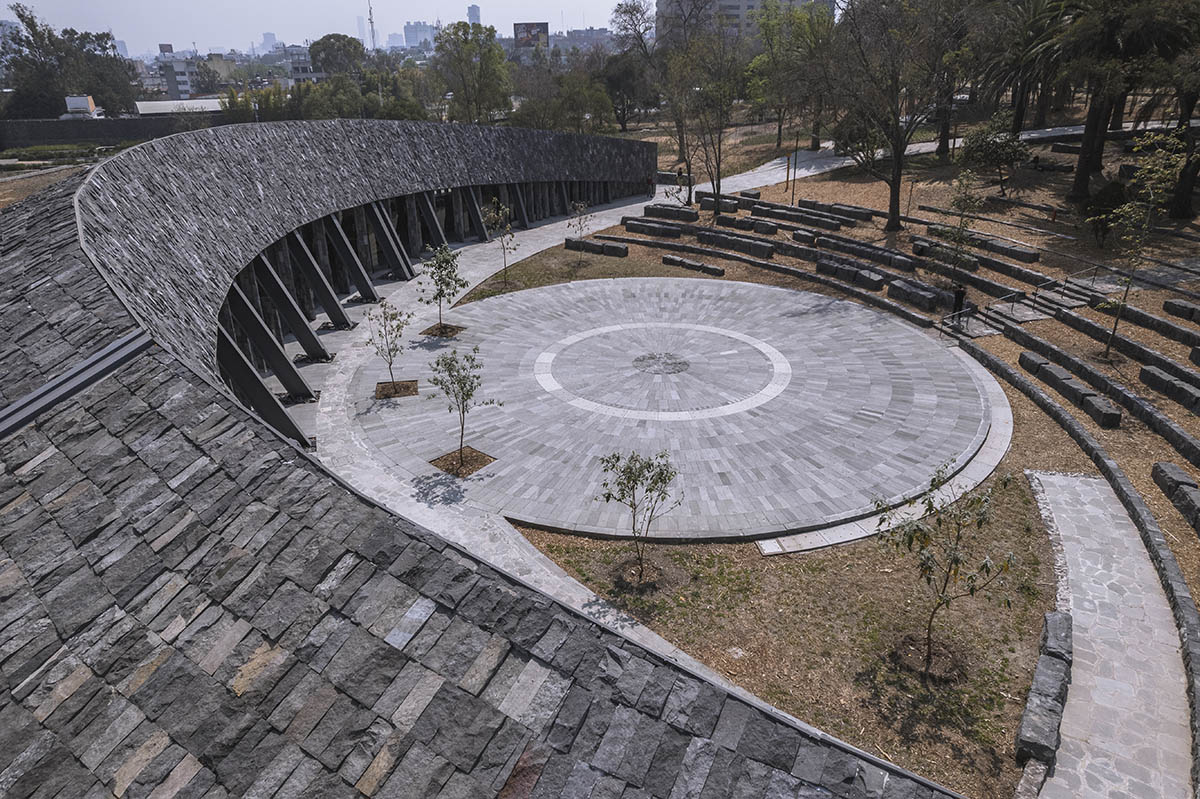
Emerged as a new cultural, landscape and environmental node within the second section of the Bosque de Chapultepec in Mexico City, the project was realized as part of the initiatives of the masterplan "Chapultepec Nature and Culture" coordinated by Gabriel Orozco.
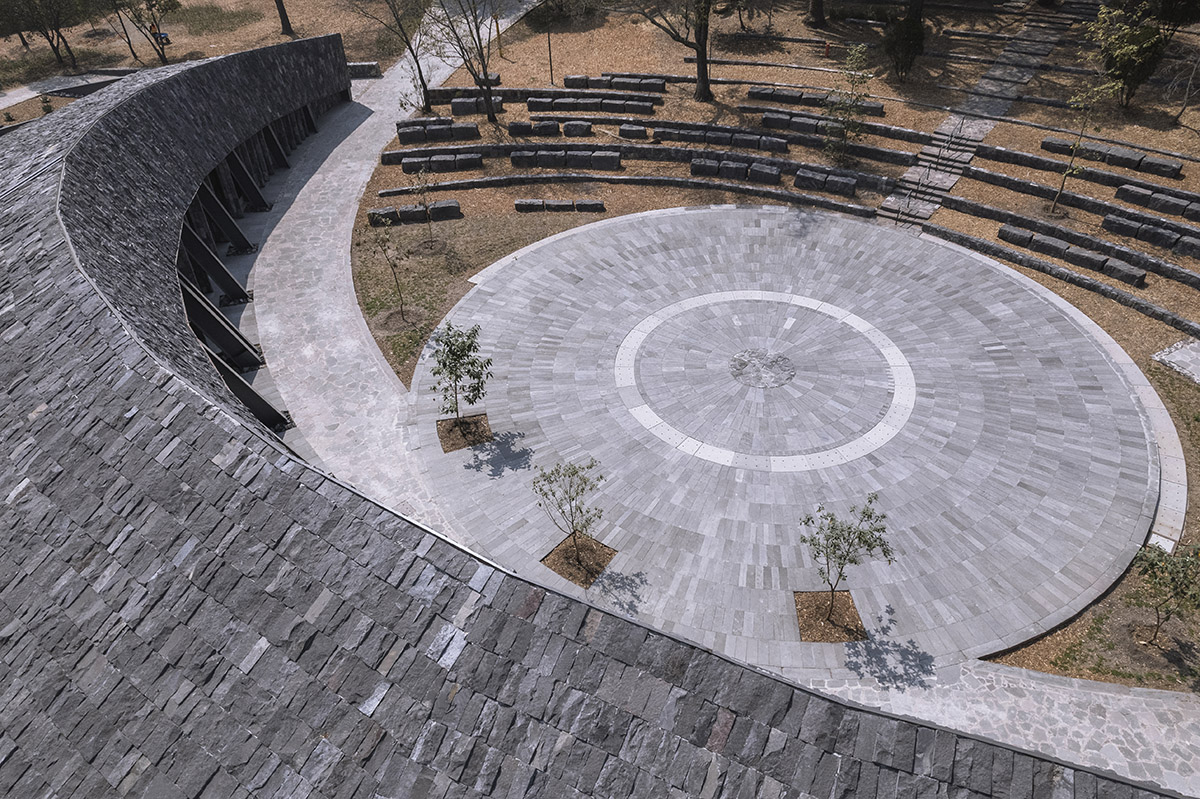
The arc-shaped pavilion is surrounded by a series of gardens referring to the diverse ecosystems and natural landscapes of the Valley of Mexico Basin such as temperate forests, grasslands, wetlands and pedregal vegetation.
These gardens are carefully integrated within the existing vegetation, topography and equipment of Chapultepec, thus optimizing and increasing its great potential as an urban forest.
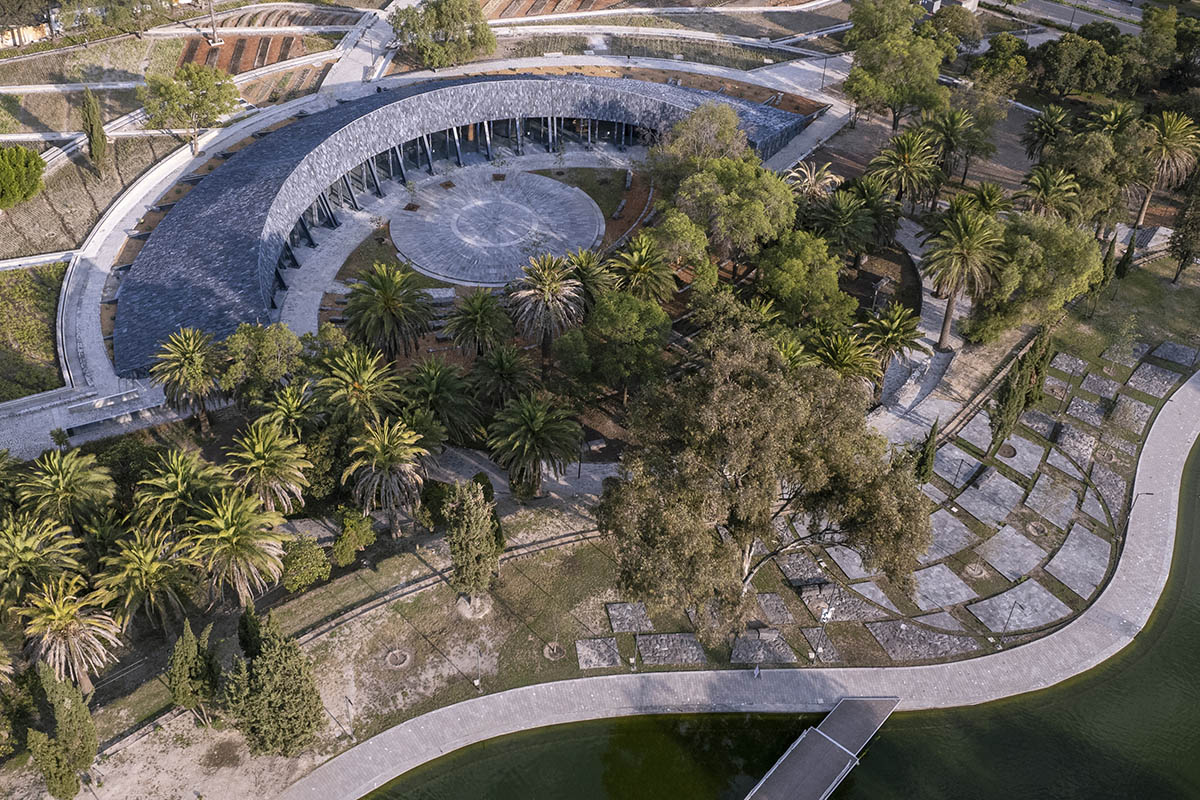
For the accessibility and enjoyment of these gardens, the studio has incorporated a series of "biocultural walks", which significantly improve pedestrian connectivity in this section of the forest.
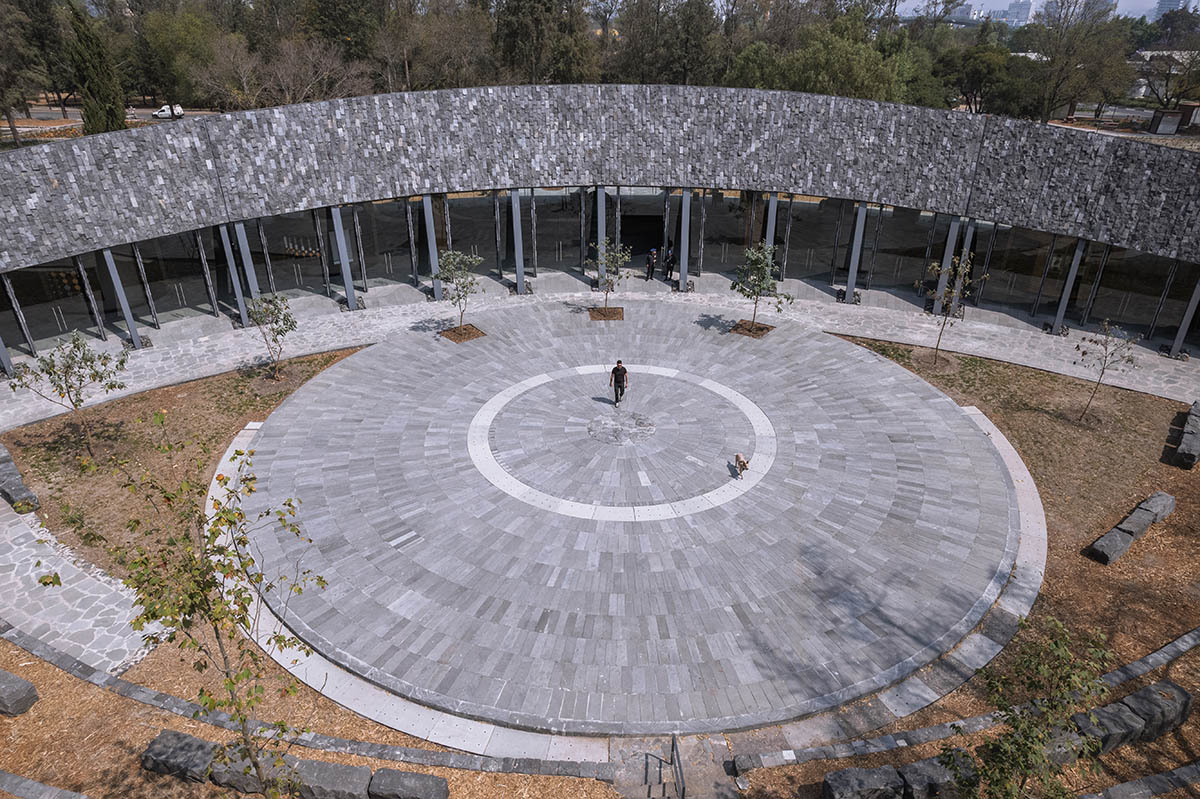
"The walks offer an immersion experience in nature and an educational rediscovery of the importance of natural elements within an urban forest and our relationship with them, thus transcending their merely connective and aesthetic functionality," said the studio.
"The biocultural walks adopt trajectories in the form of a concentric spiral that gives continuity to the curved lines that define the outline of Menor Lake."
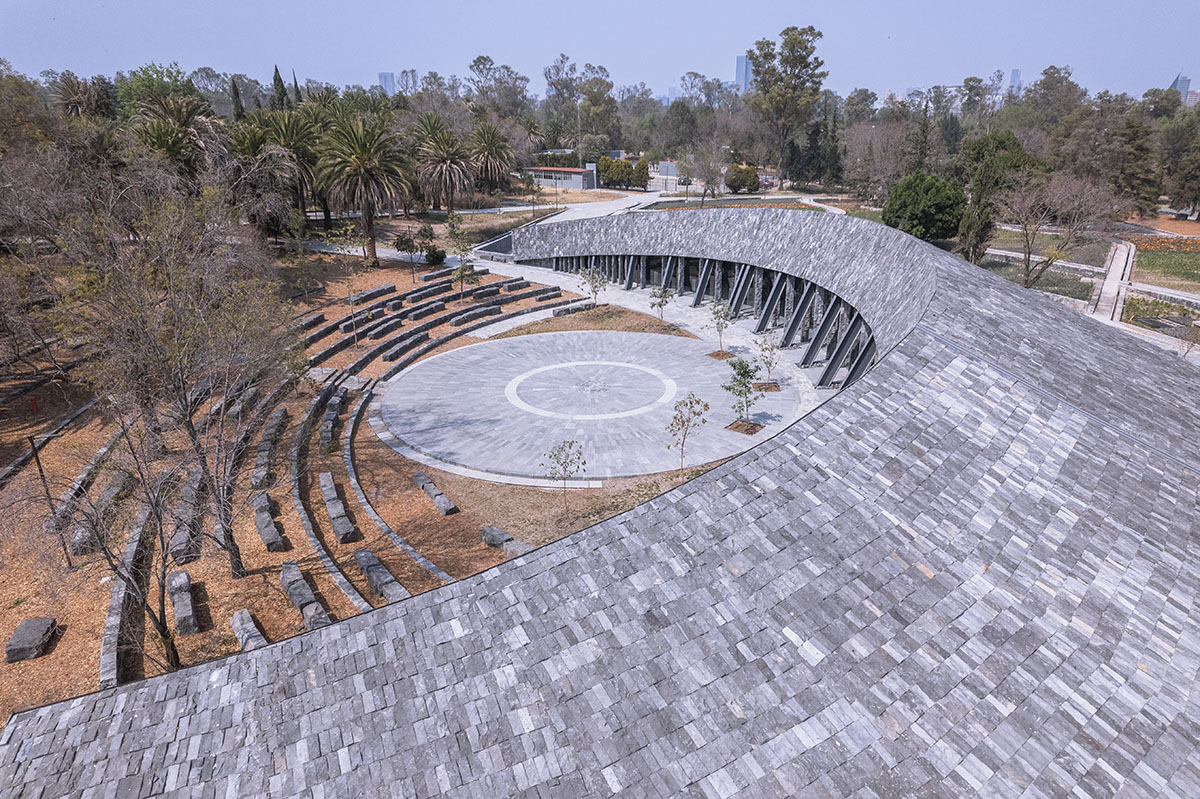
"Its tours start from the existing cultural equipment at different points around the perimeter of the land and intuitively come together in the Center for Environmental Culture: a cultural node projected as an open public space that allows one to experience the close relationship between nature and the new cultural and environmental dynamics," the studio added.
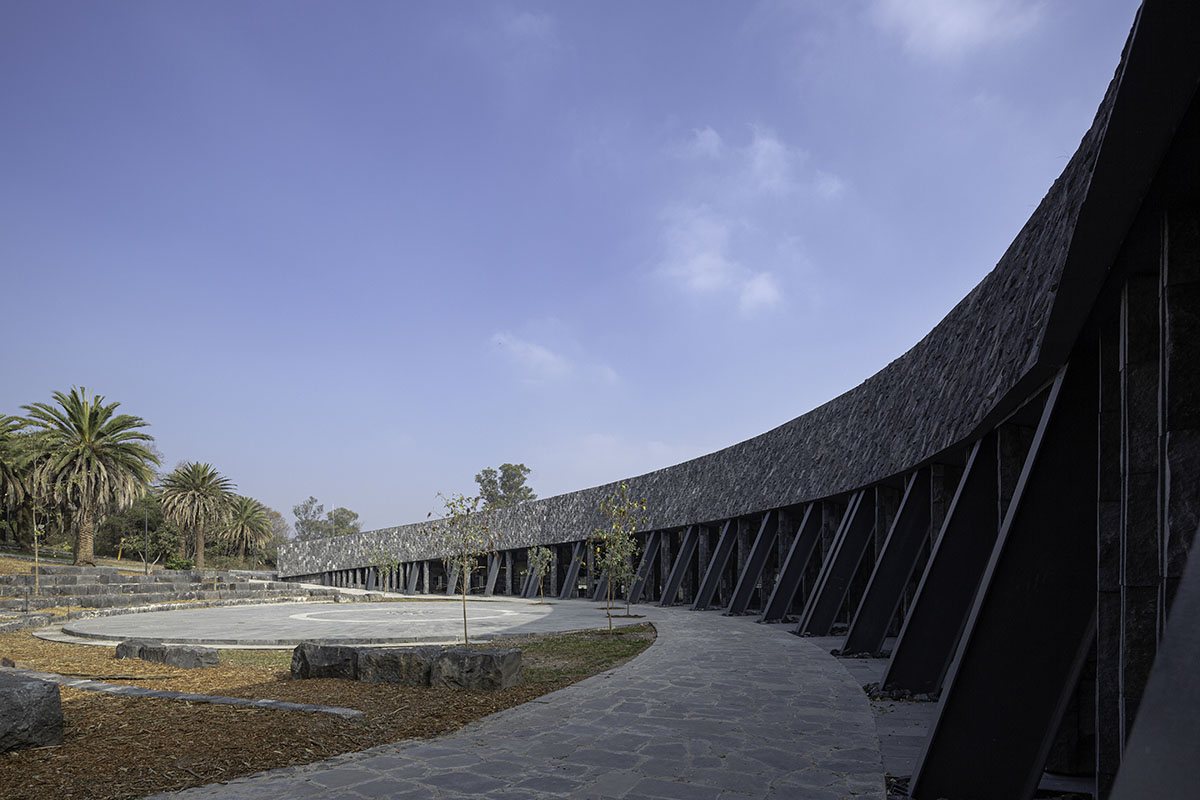
Image © Marcos Betanzos
The complex is made up of the duality and interaction of an open-air Cultural Space with a Forum or Circular Plaza, and an Environmental Pavilion that houses exhibitions focused on promoting environmental culture.
The architects has decided the spatial configuration of the project based on it strategic location.
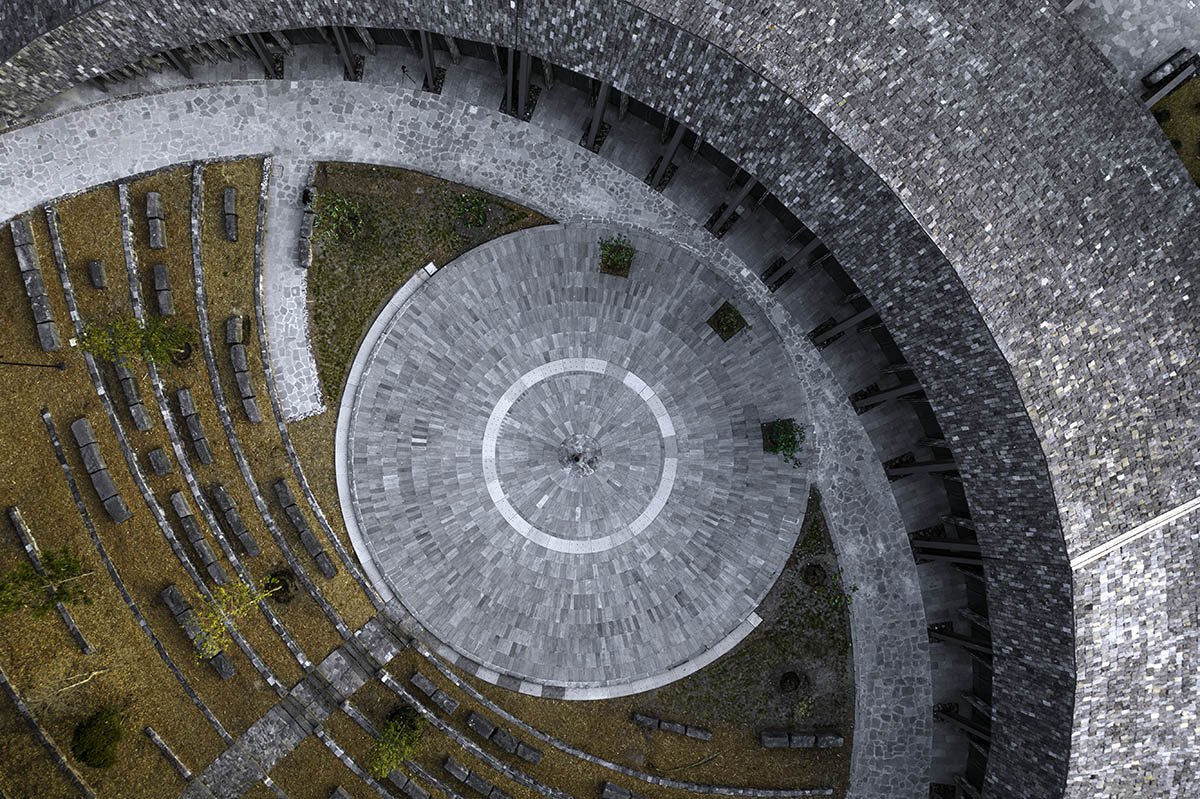
Image © Marcos Betanzos
For this, the pavilion is delicately incorporated into the geometry of the lake and a natural slope with existing vegetation so that it can provide an optimal space to place a set of volcanic stone steps that "serve as containment, rest and contemplation for the new landscape or environmental setting."
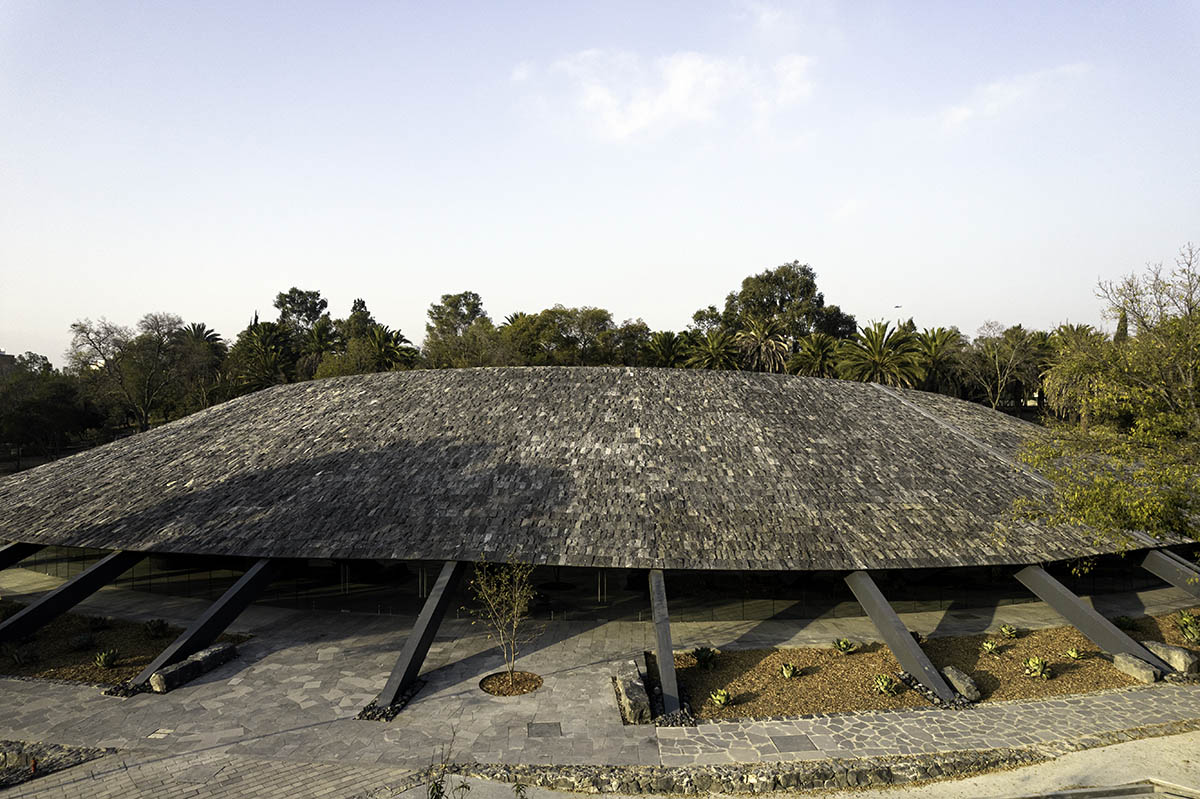
Image © Marcos Betanzos
The pavilion is inspred by the volcanic landscapes of Pedregal
The pavilion is conceived as a singular element of the landscape. Laid out in a semi-conical geometry, its black stone-clad 2,000-square-metre roof takes cues from the volcanic landscapes of Pedregal, while the pavilion is subtly integrated into its natural and cultural environment.
"The result is a light, flexible, versatile and very low-maintenance pavilion," according to the studio.
"Its formal simplicity is accompanied by the conscious choice of optimal construction systems and new technologies that minimize its carbon footprint and its impact on the environment."
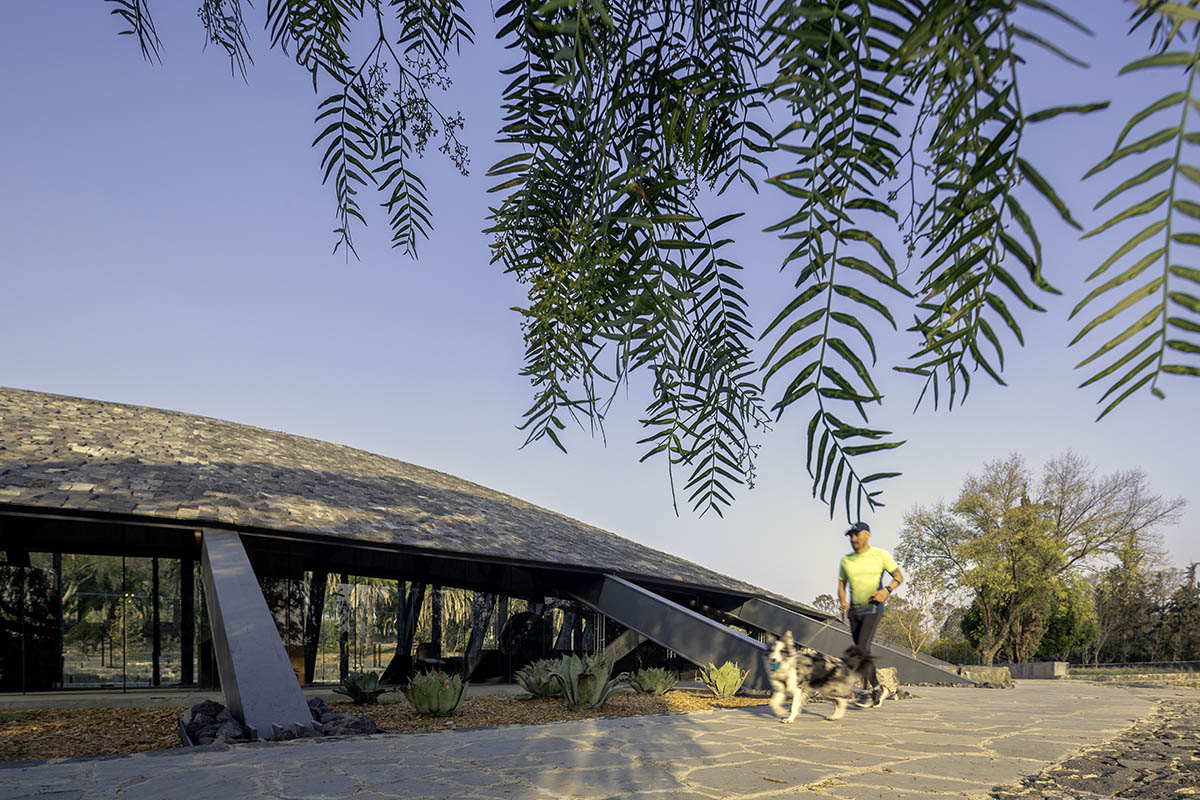
Image © Marcos Betanzos
The interior of the pavilion offers complete continuity and spatial flexibility that can accommodate and explore different museography proposals, always allowing visual transparency towards its two exterior fronts: the Gardens and the Cultural Space.
While these characteristics emphasize its versatility and spatial dynamism, the pavilion houses various kinds of activities and exhibition programs that need some shelter and shade.
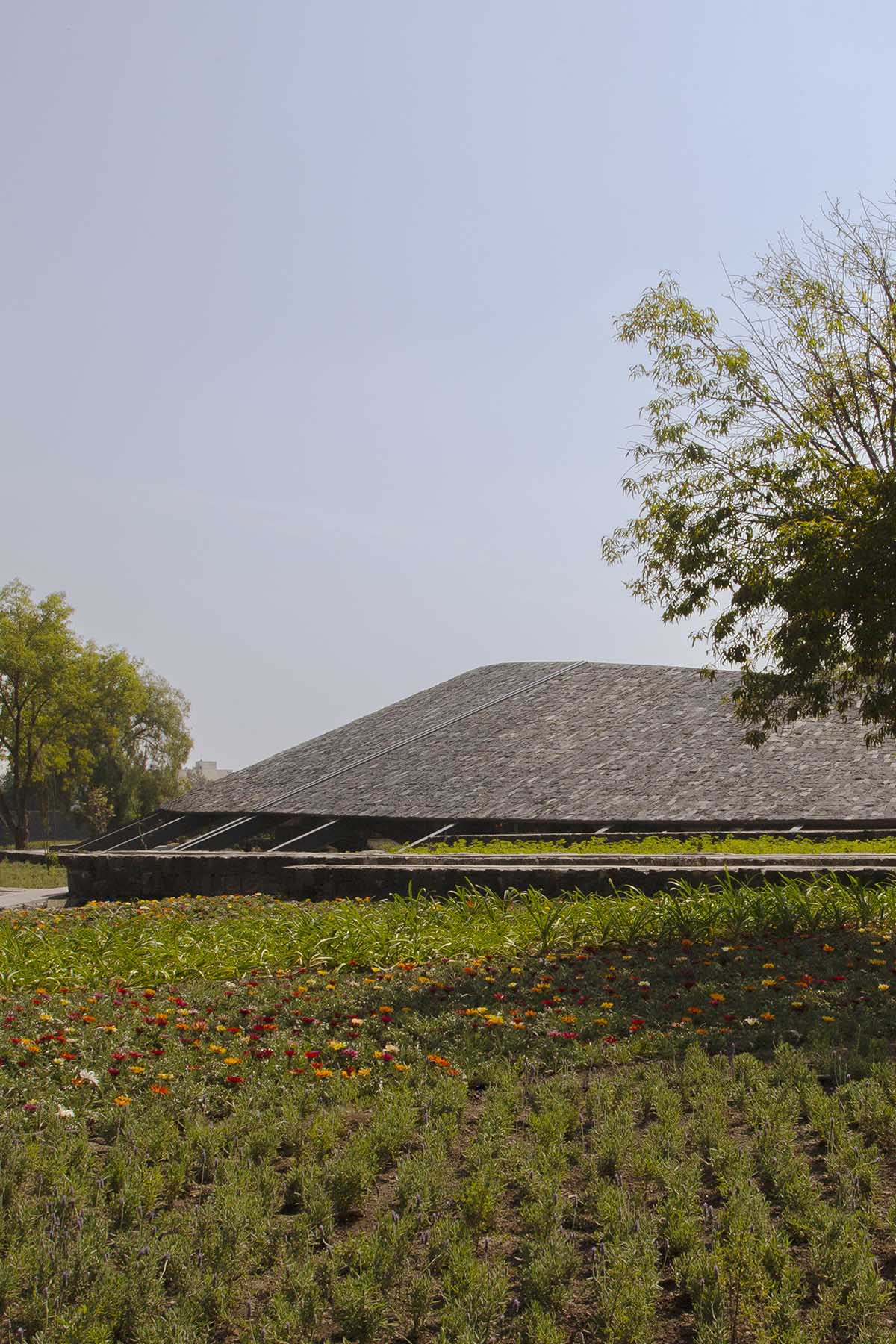
"The experience of feeling direct contact with the Gardens/Walks is also favoured, which provides the visitor with a unique landscape from inside the Pavilion, enhancing the importance of natural elements and the landscape in an educational and cultural environment," the office added.
"This approach of the Pavilion allows visualizing the harmony, direct interrelation and fusion of the natural and the human, the existing and the project, and the landscape and the architecture."
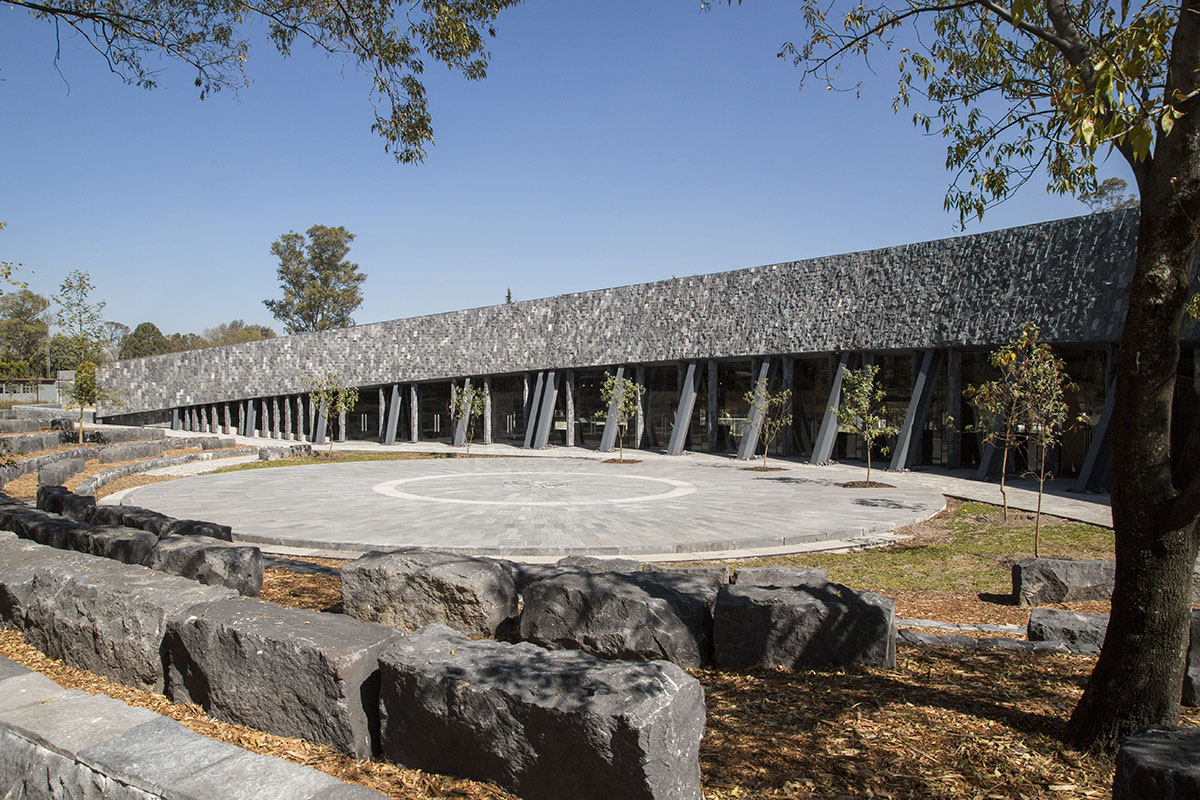
Where previously there was a vehicular parking lot, there is now the Agroecological Zone with various plots of rotating crops, contained by stone walls as "tecorrals".
These offer a new landscape in harmony with the roof of the pavilion while improving the environmental conditions of the space and promoting biodiversity. "This area also seeks citizen participation through various educational, demonstration and agricultural production programs," said the office.
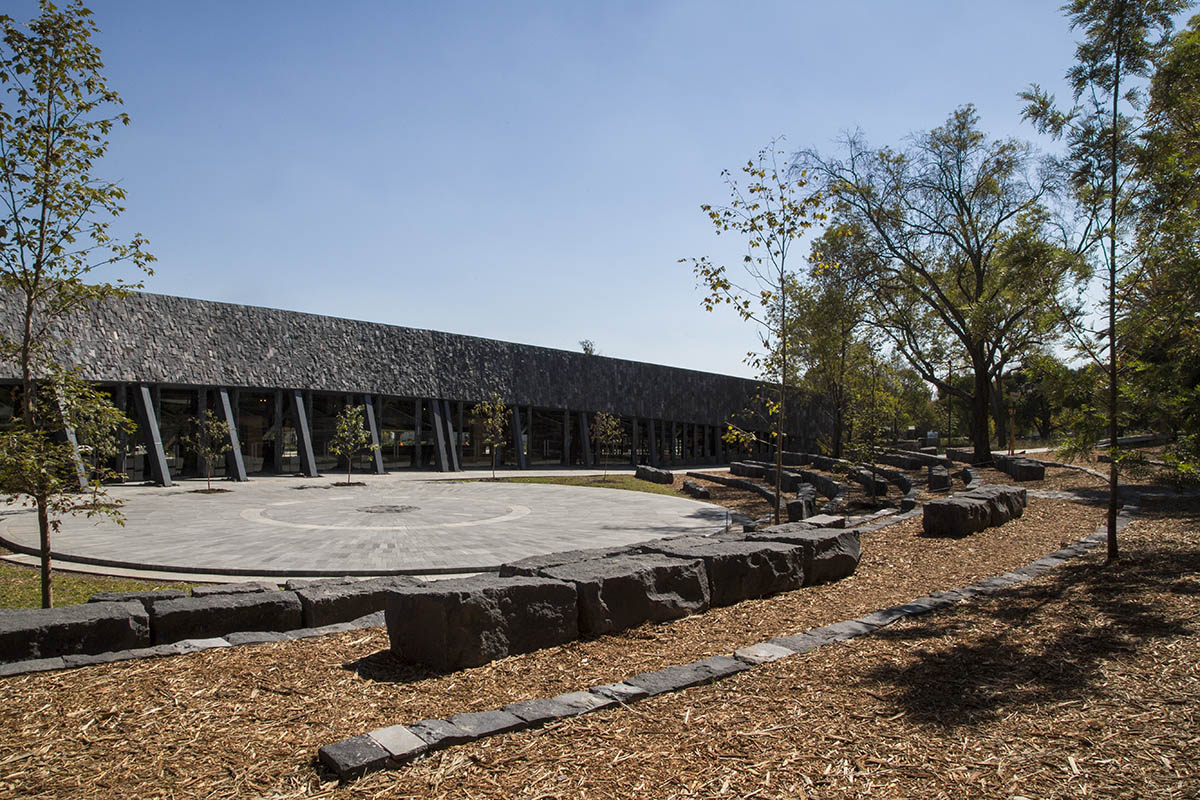
The project prioritizes the design principles of permaculture, which zones the space and regulates its level of maintenance according to proximity criteria, in this case to the Center for Environmental Culture.
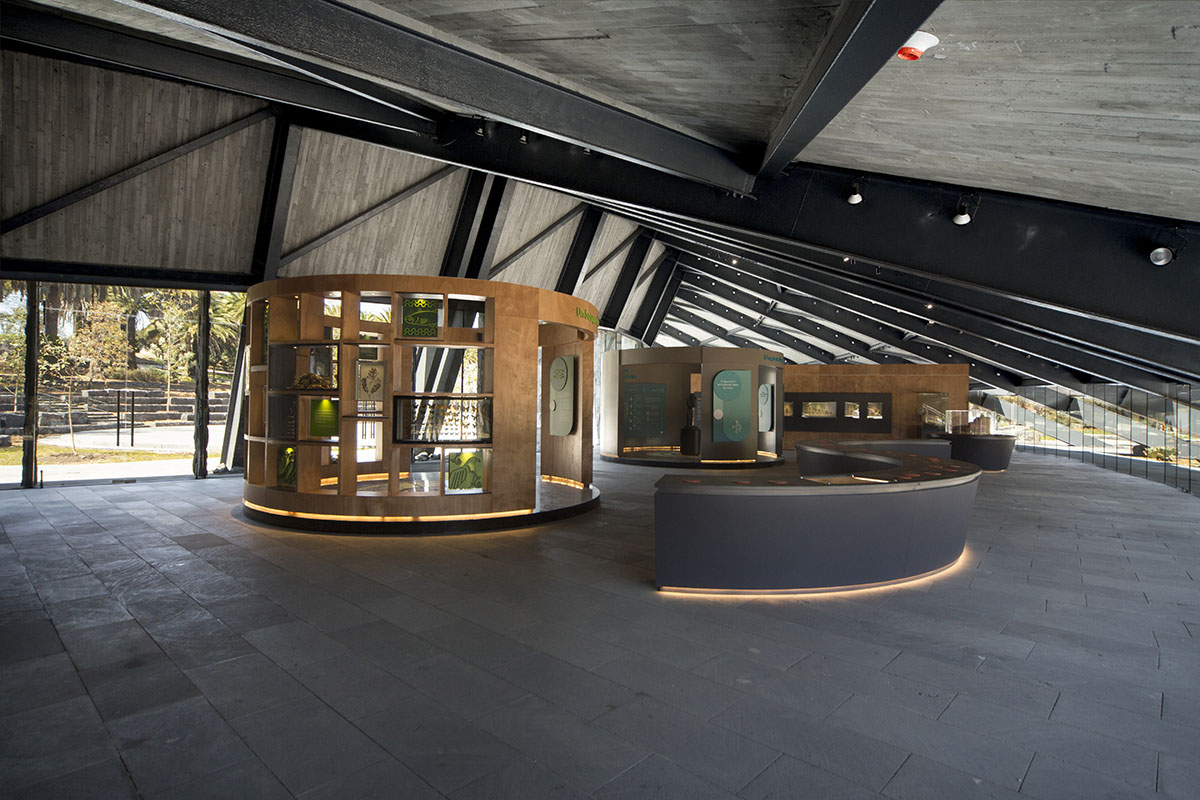
The irrigation system for the agroecological zone works by gravity. It begins its journey in Lago Menor and is distributed thanks to a visible master channel and several secondary channels with manual gates that optimize the use and management of water.
The project provides a unique set of landscapes, emotions, encounters, activities and learning in the context of an urban forest, ensuring compliance with its ecosystem functions and becoming an active promoter of environmental culture.

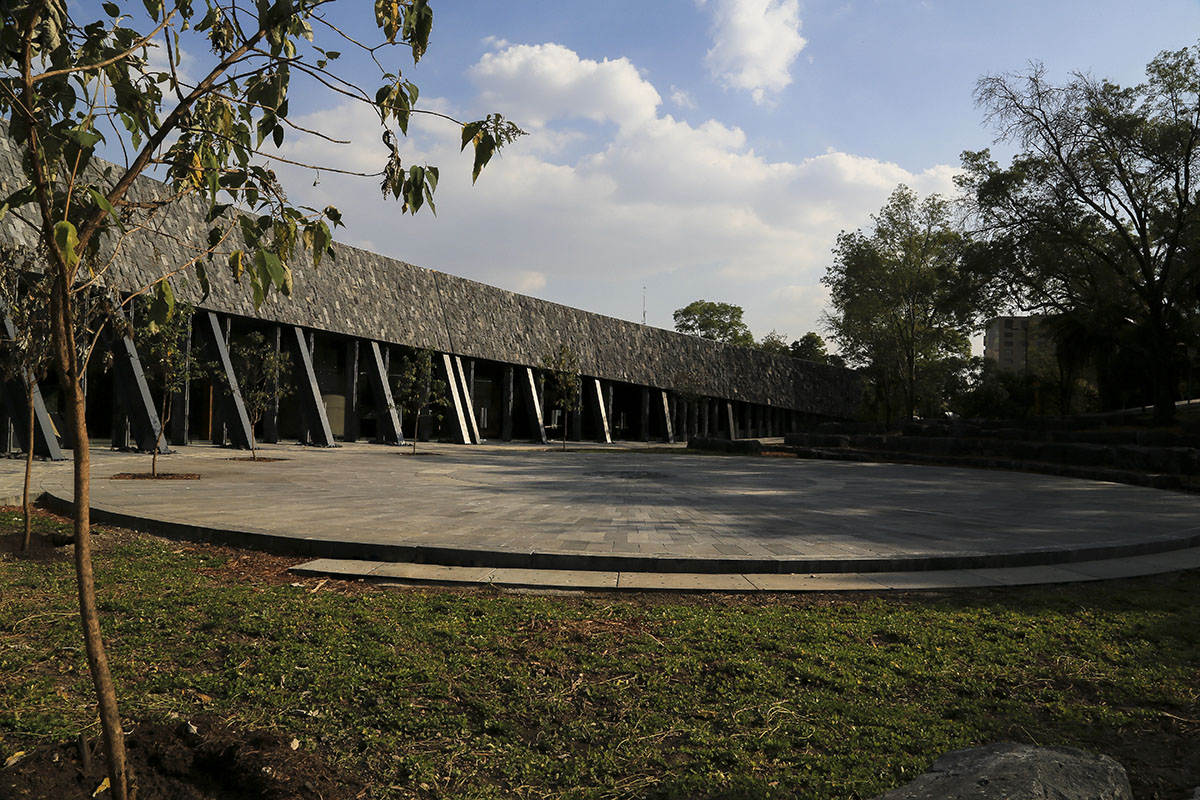
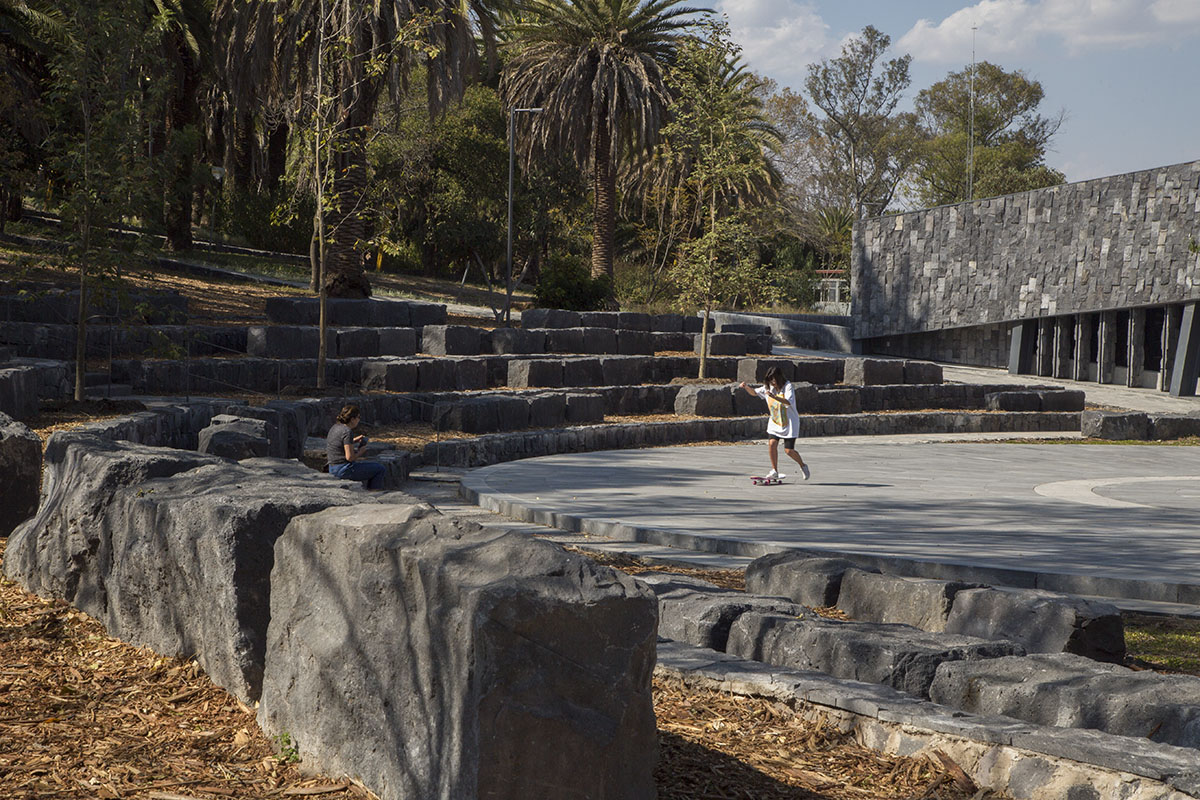
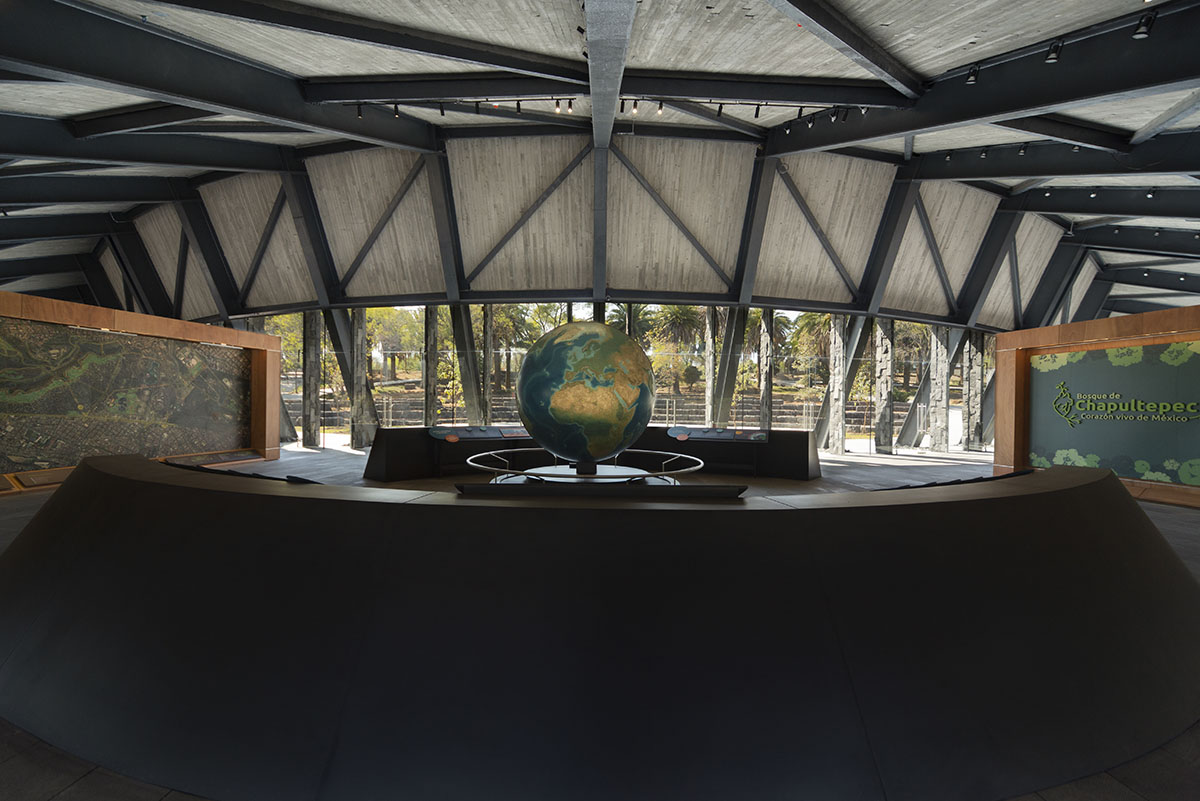
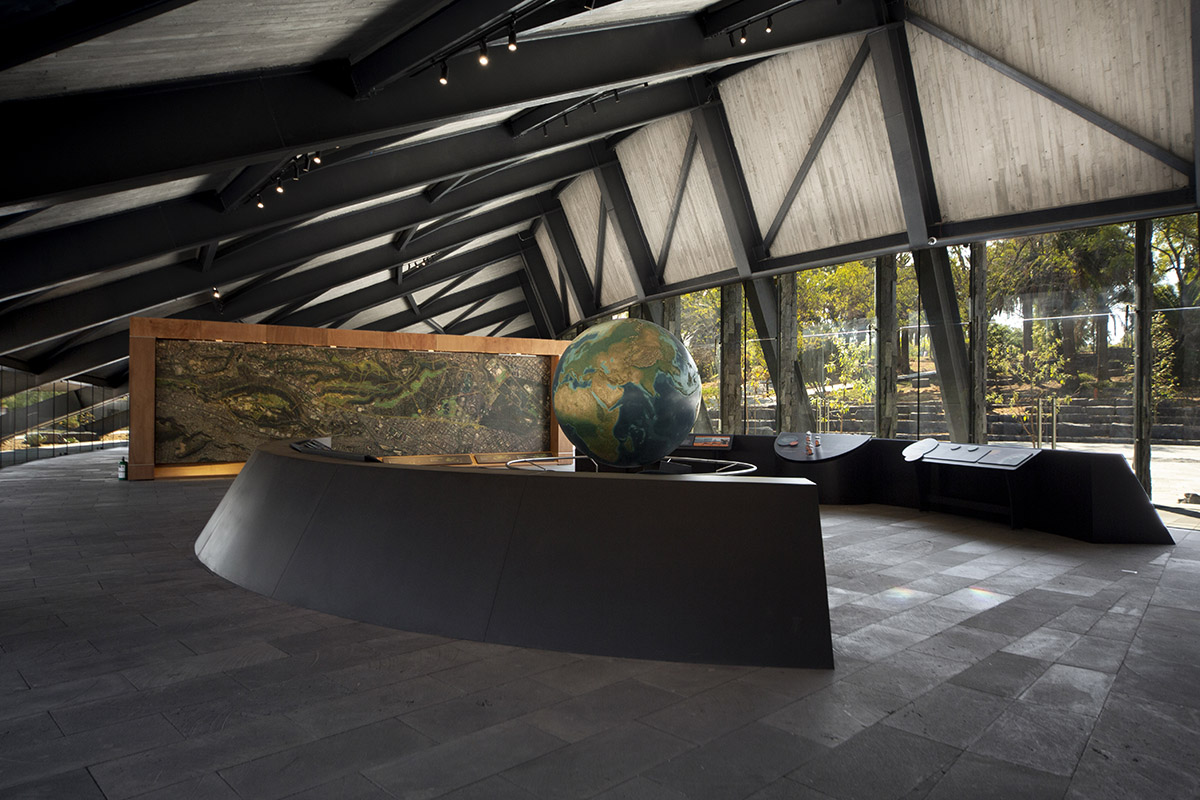
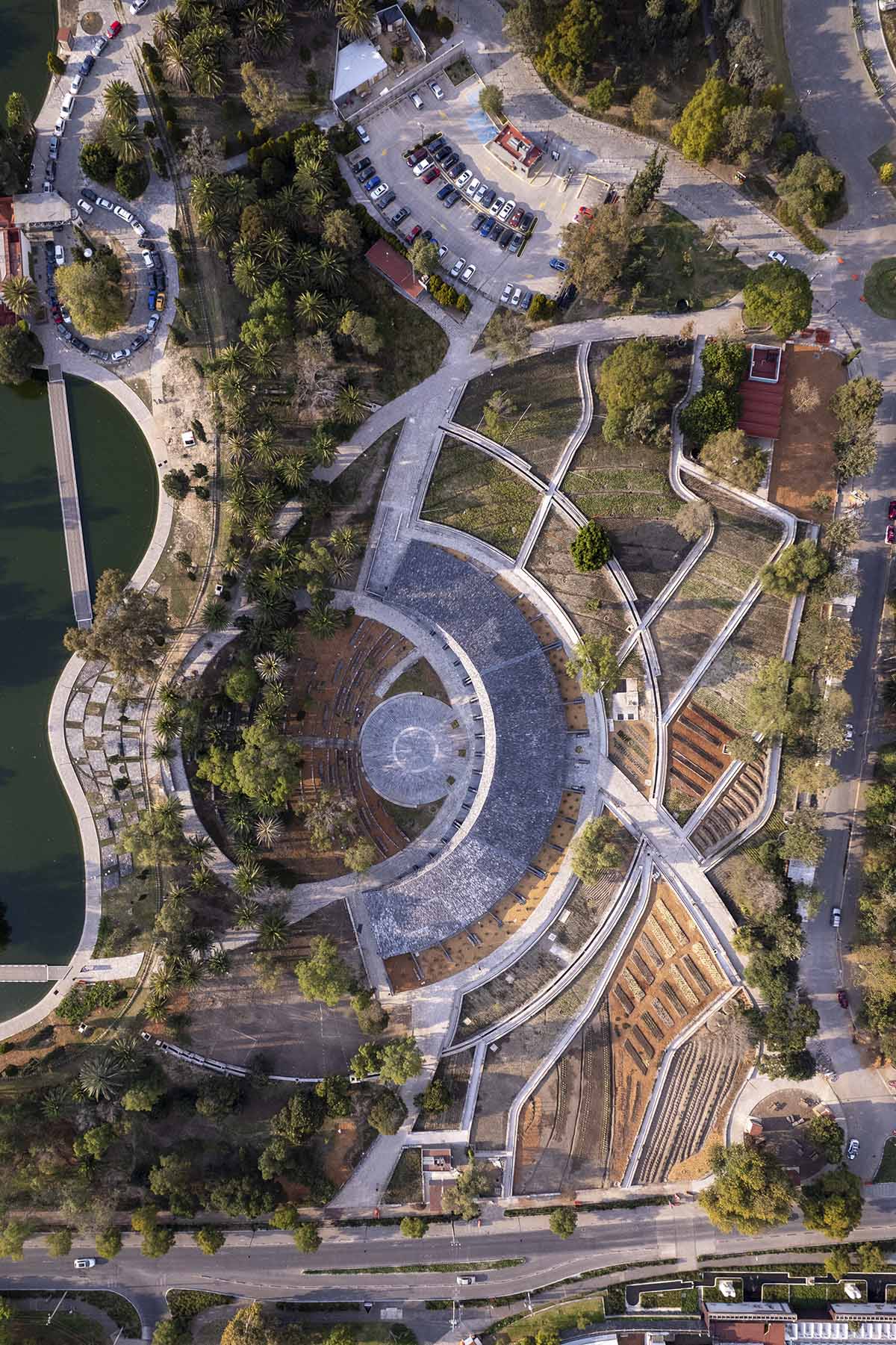
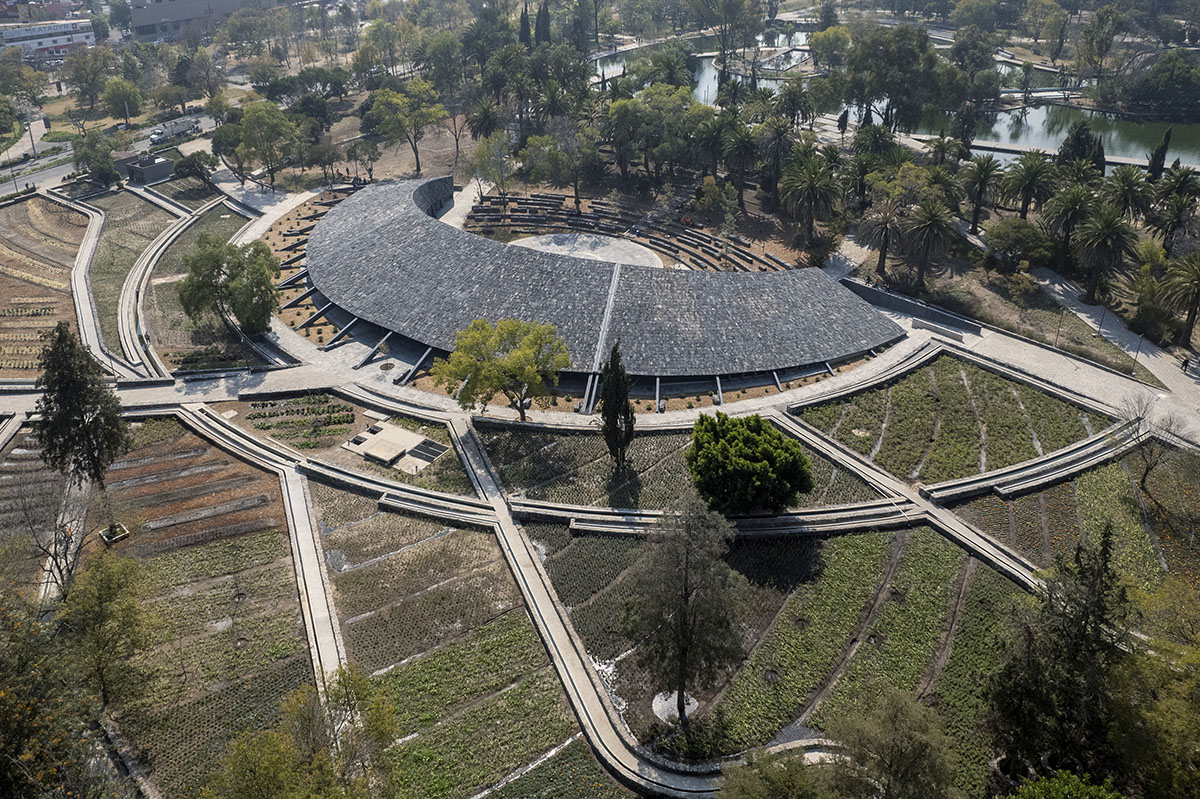
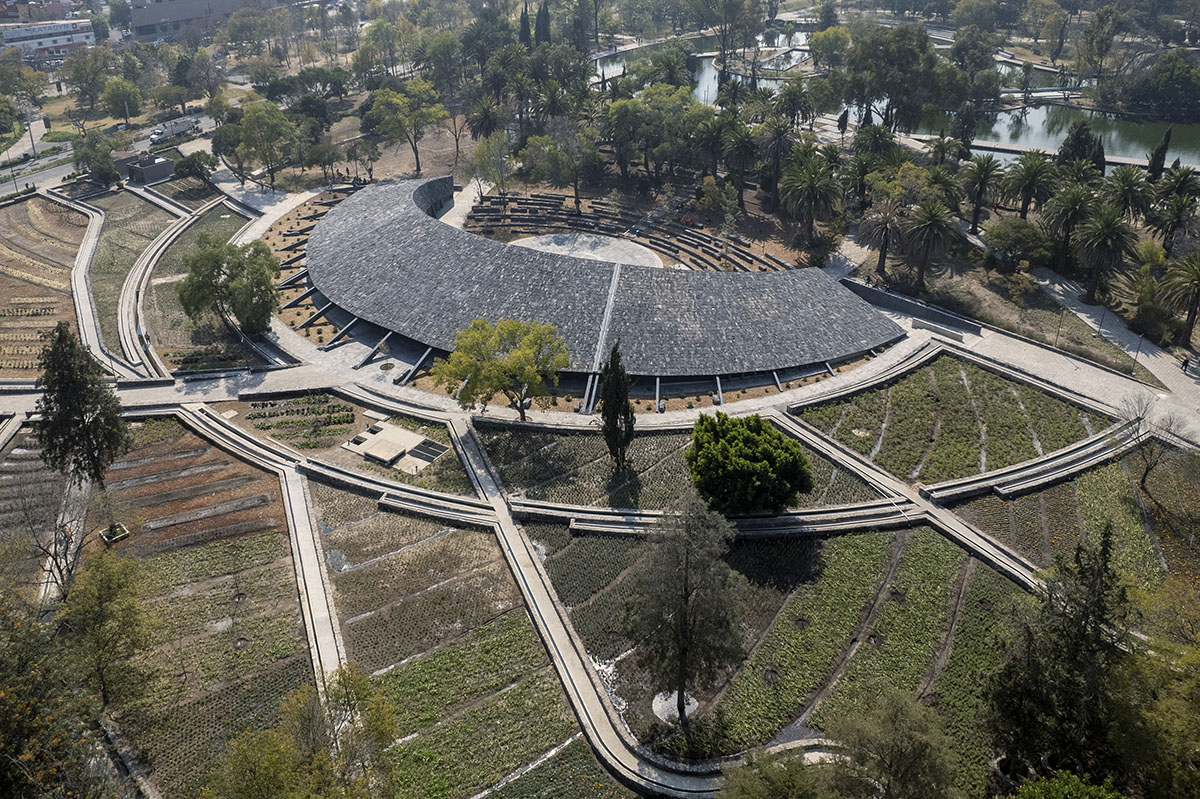
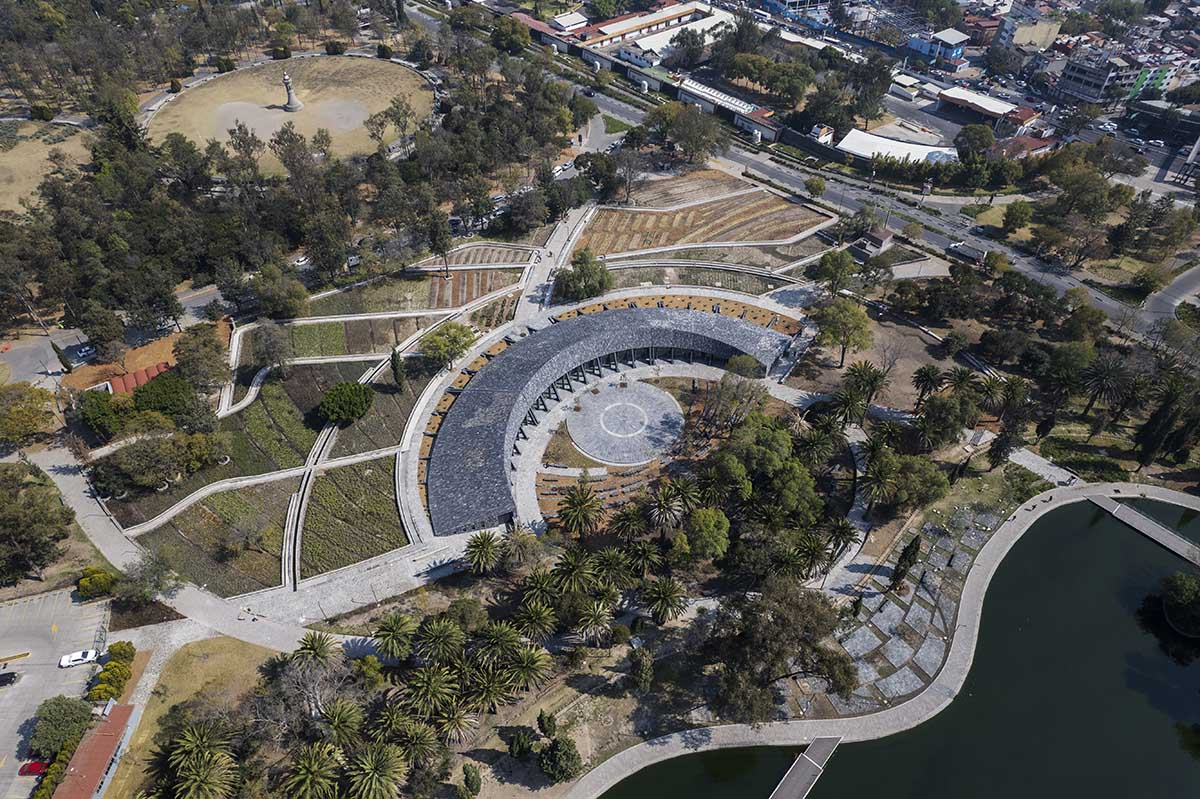
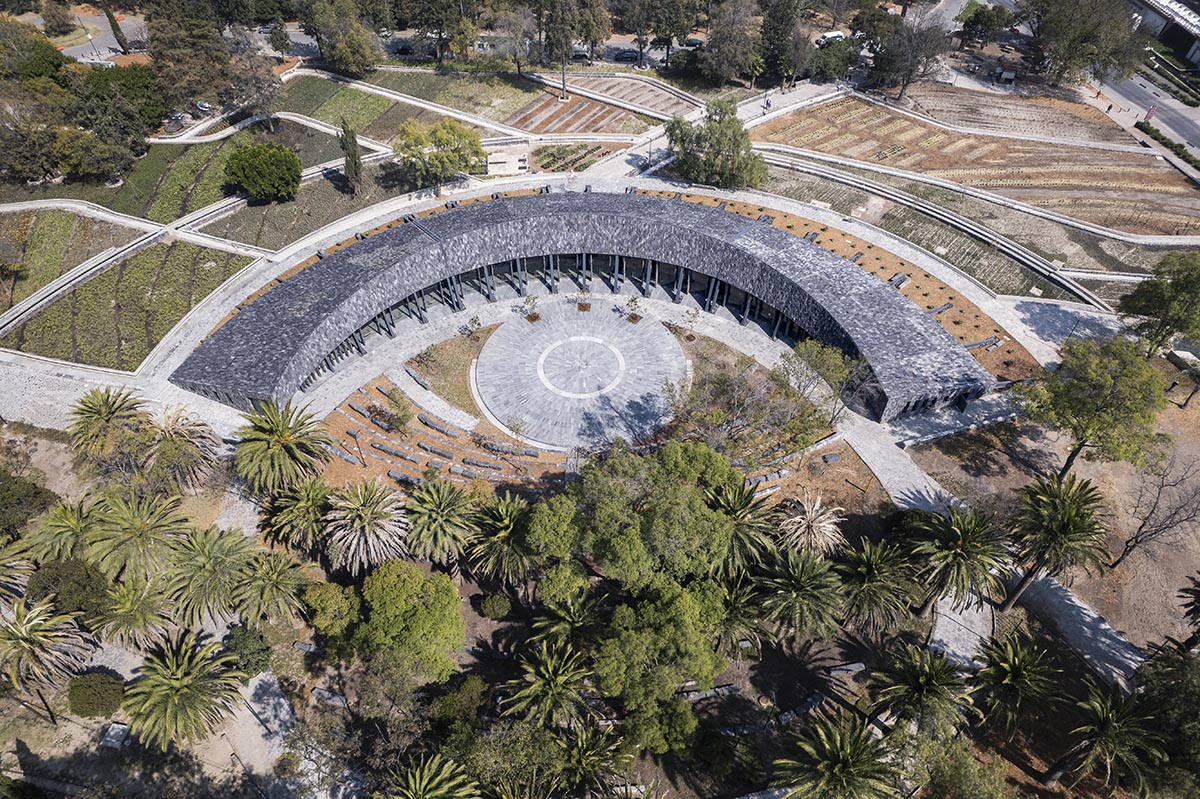
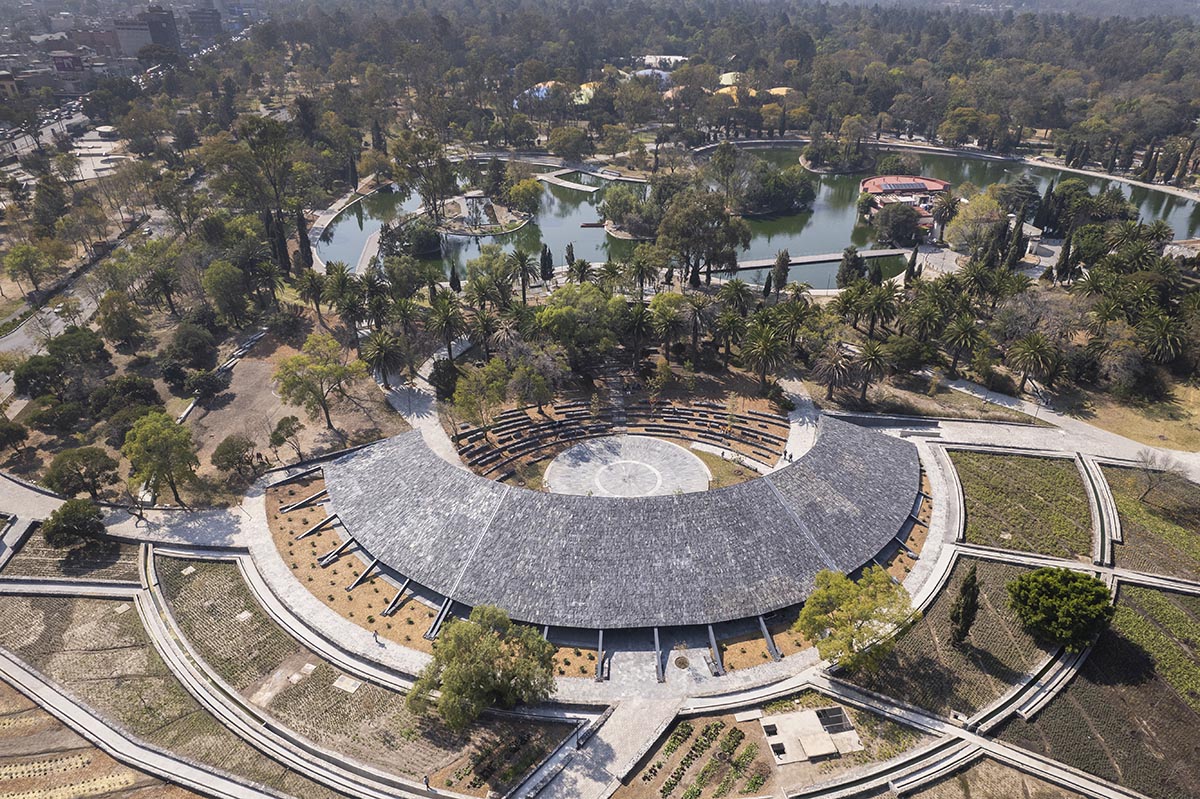
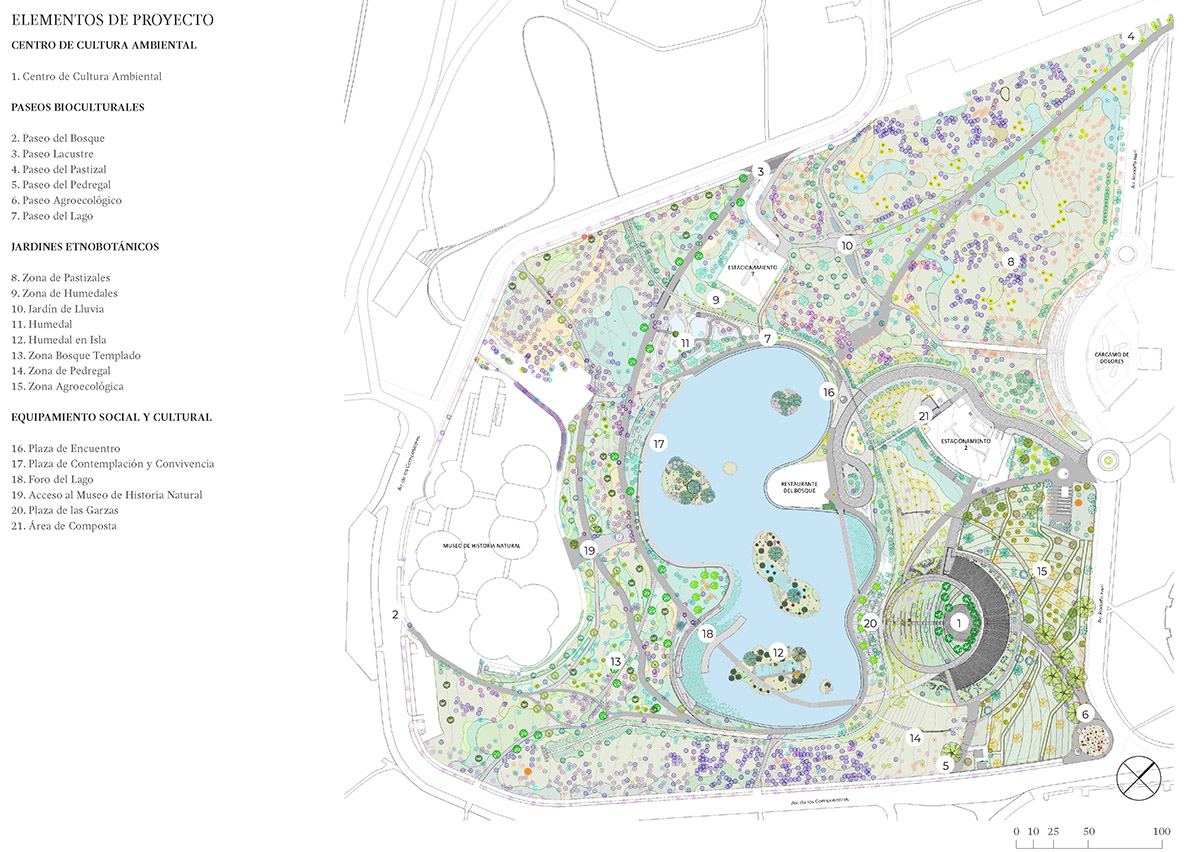
Masterplan
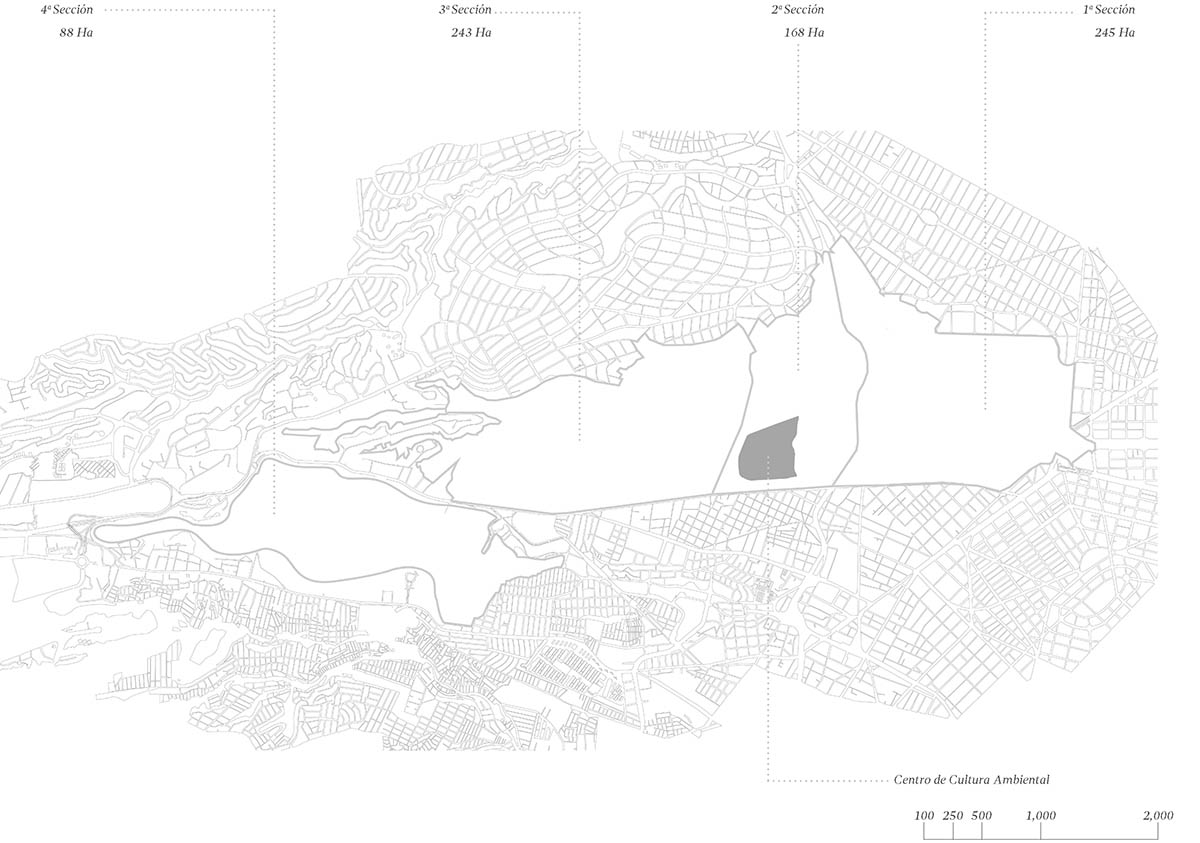
Site plan
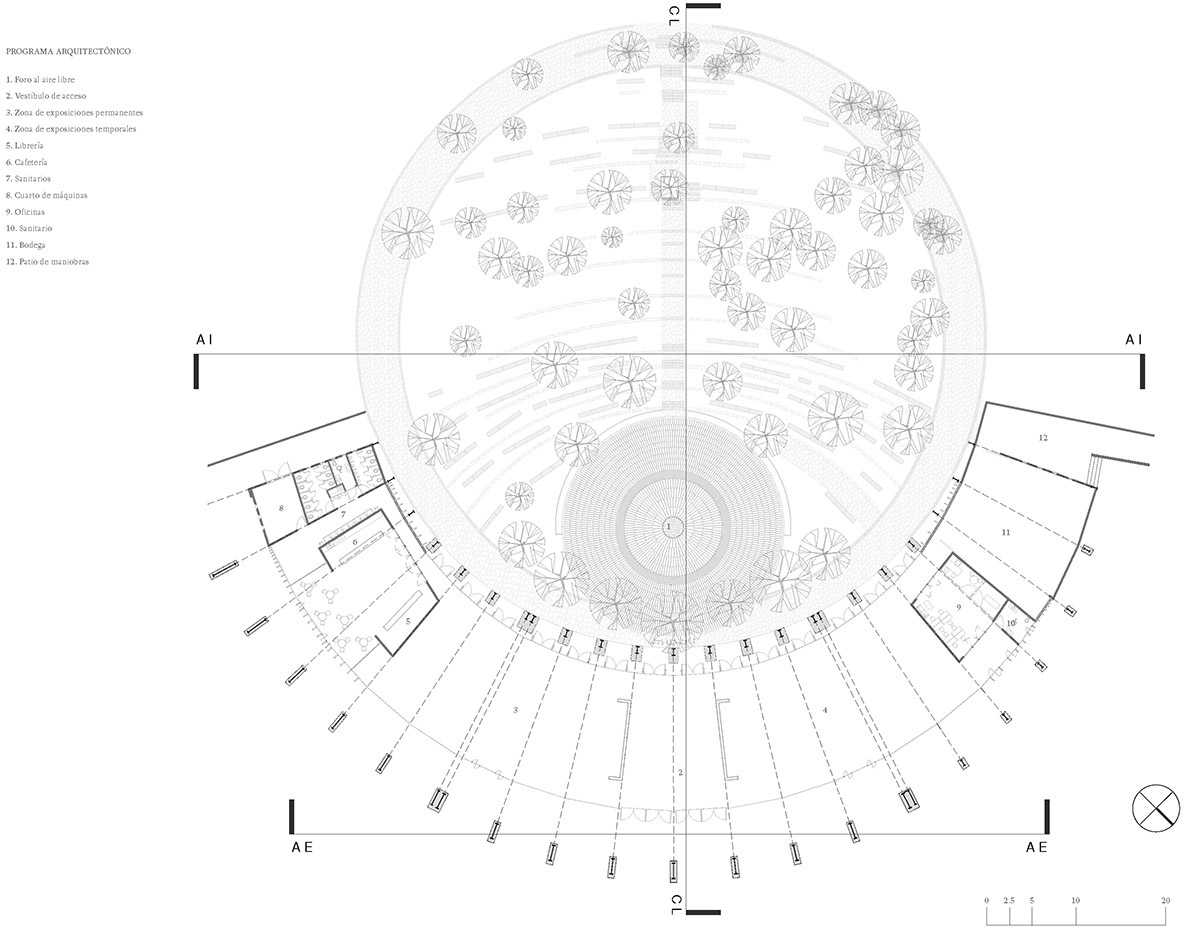
Floor plan
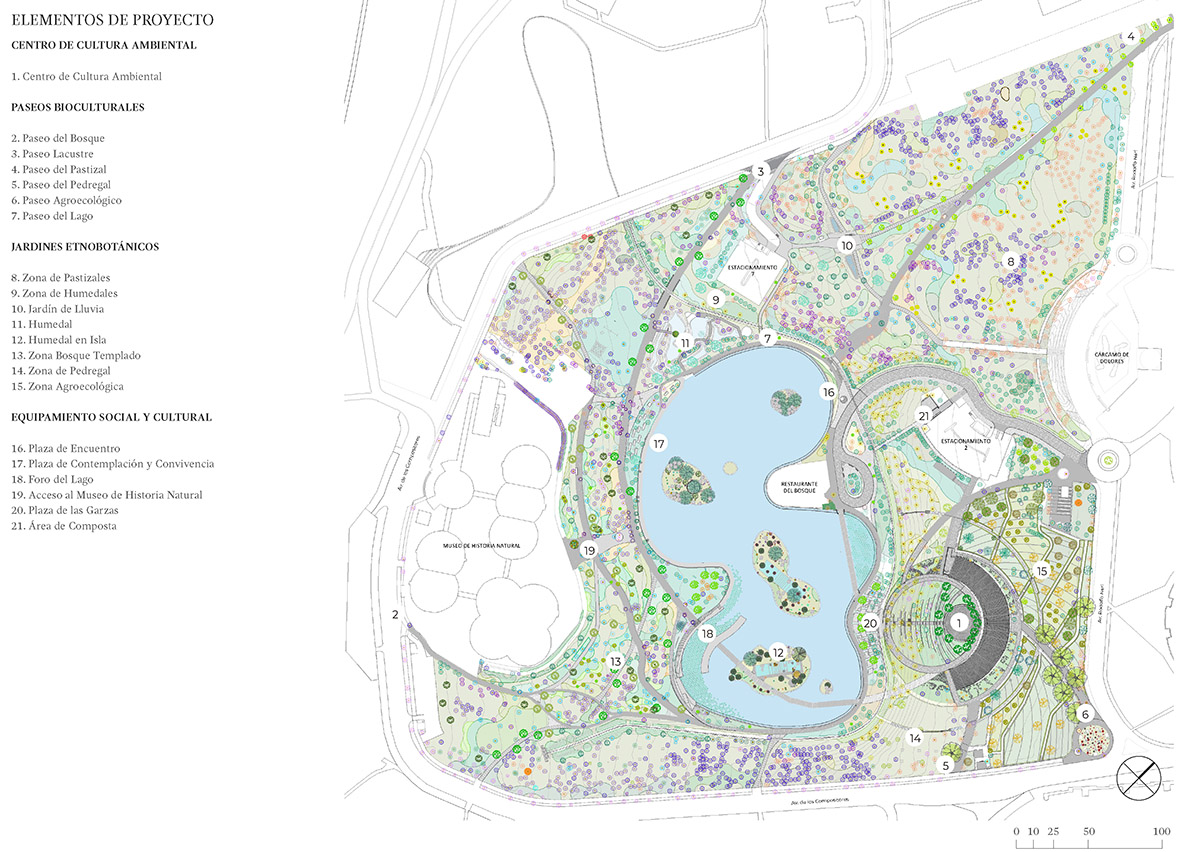
General floor plan

General section

Exterior elevation

Interior elevation
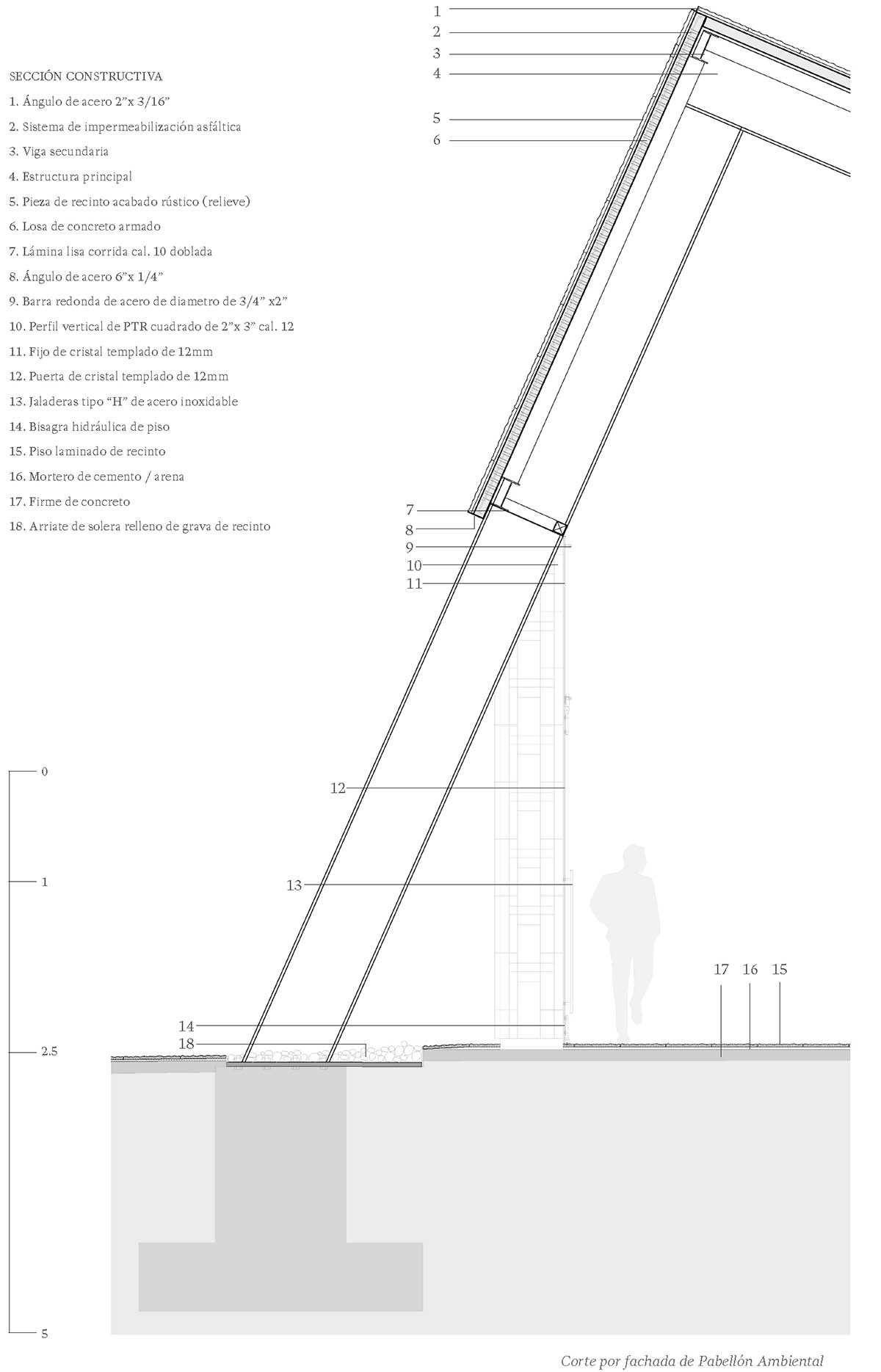
Detail
Project facts
Project name: Chapultepec Environmental Culture Center
Architects: Erre Q Erre
Location: Bosque de Chapultepec, Ciudad de México.
Size: 90,000m2
Lead Architect: Arq. Rafael Ponce Ortiz
Project Partner: Ing. Juan Ansberto Cruz
Architecture / Urbanism / Landscape: Rafael Ponce Ortiz, Margarita Gorbea Angeles, Cesar Ávila, Oscar Díaz Gaspar, Abigail Esparza, Diego Bueno de la Paz, Valerio López Acevedo.
Landscape Engineering: Juan Ansberto Cruz Gerón, Paola Patricia González Ordaz, Fabiola Alvarado, Gerardo Tapia, Eduardo Santiago, Perla Flores.
Vegetable Proposal: Secretaría del Medio Ambiente, Rodrigo Canjay Torres, Pamela Vélez, Fortino Acosta.
Engineering and Environmental Design: Dr. Alejandro de Alva, Biol. Amado Ríos, Ing. Edgar Ojeda Sotelo, Biol. Oscar Ramírez, Dra. Coral Rojas Serrano, Ing. Javier Cuauhtémoc Blancas Ponce.
Geometry and Structural Design: Arq. Eric Valdez Olmedo and Arq. Axayacatl Sánchez.
Museography: Adriana Miranda
Project Coordinator Chapultepec Nature and Culture: Gabriel Orozco
Coordinator of the Public Architecture Competition: Arq. Ernesto Alva
All images © Margarita Gorbea unless otherwise stated.
All drawings © Erre Q Erre.
> via Erre Q Erre
